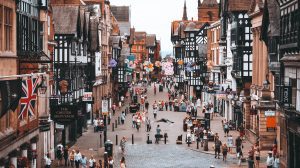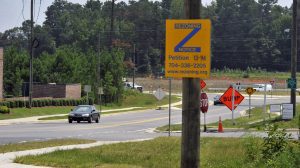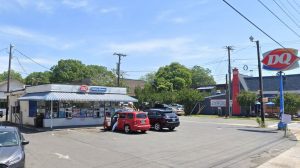Articles

Charitable giving is an invisible thread binding people and communities together across the 32-county Carolinas Urban-Rural Connection study region — but how much people give, and what resources are available, varies from place to place. The Carolinas Urban-Rural Connection A special project from the UNC Charlotte Urban Institute Read about the project here Introduction: Strengthening […]

Charlotte and Mecklenburg County are still facing a large gap between the supply of affordable housing and the number of residents who need it, as inreasing rents and a tight housing market are squeezing more families’ budgets and putting them at risk of housing instability, evicion and homelessness. Those are some of the key findings […]

Charlotte has a reputation as a car city, but many of its leaders badly want to promote more biking, walking and transit use. That’s one reason an intriguing idea kept surfacing at this week’s City Council Transportation & Planning Committee meeting: Why not take all the cars off a major street in uptown or South […]

To better understand commuters in the Carolinas Urban-Rural Connection region down to the individual level, we studied anonymized cell phone tracking data at select employment locations, seeking to determine how commuter connections differ between types of business districts and types of firms. By mapping the residential location of workers at a broad range of employment […]

The UNC Charlotte Public Policy Program, in Partnership with Gerald G. Fox Masters of Public Administration Program and the UNC Charlotte Urban Institute, will hold its 2nd annual Talking Policy in the Queen City event on October 2nd from 6:00 to 8:30 p.m. at the Center City campus. This year, guest speaker Dr. Erik Godwin […]

In the past decade, City Council has only denied 27 rezoning petitions out of more than 1,200 filed, according to city records. That means there are more new breweries in Charlotte since 2009 than rezoning petitions turned down.
What’s behind the high approval rate?

In telephone calls, emails and chats over coffee or dinner, dozens of business and community leaders in Charlotte and the surrounding suburban and rural communities regularly communicate — sometimes discussing local issues and sometimes not, in conversations that are happening deliberately. For two decades, the non-profit Lee Institute, which promotes civic engagement, has focused on […]

Mecklenburg County Community Support Services, in partnership with UNC Charlotte Urban Institute, last week released the Housing & Homelessness Ecosystem of community providers in Charlotte and Mecklenburg County. The Ecosystem is one part of a multi-step process in creating a culture of continuous improvement. To read more about why an Ecosystem matters for Charlotte-Mecklenburg, and […]

Are rural leaders different than their urban counterparts? And how can programs that develop leaders bridge the gap between them, if indeed there is one? With leadership emerging as a key issue in research for the Carolinas Urban-Rural Connections project, we asked several leadership programs in the Carolinas about their experiences working with leaders from […]

“The more successful towns have a champion. The really successful ones have multiple champions.” We visited Liz Parham, director of North Carolina’s Main Street Program, to learn about how communities across the state are capitalizing on their cultural and natural assets to revitalize local economies. But it was a different type of asset – people […]

To move up the ladder of opportunity, there’s generally consensus that people need jobs that pay a living wage, where they can grow their earnings over time. But what’s the best way to get workers, especially low-income workers with barriers such as low educational attainment, connected to those jobs? That’s the focus of the ReCONNECT […]

Is there anything more “Charlotte” than bemoaning the closure of local icons? In one of the fastest-growing cities in the U.S., with rising rents and rapid changes in long-established neighborhoods, there’s sure to be a certain amount of churn in the local business scene. Angst and nostalgia are certain to follow. But as it grows […]